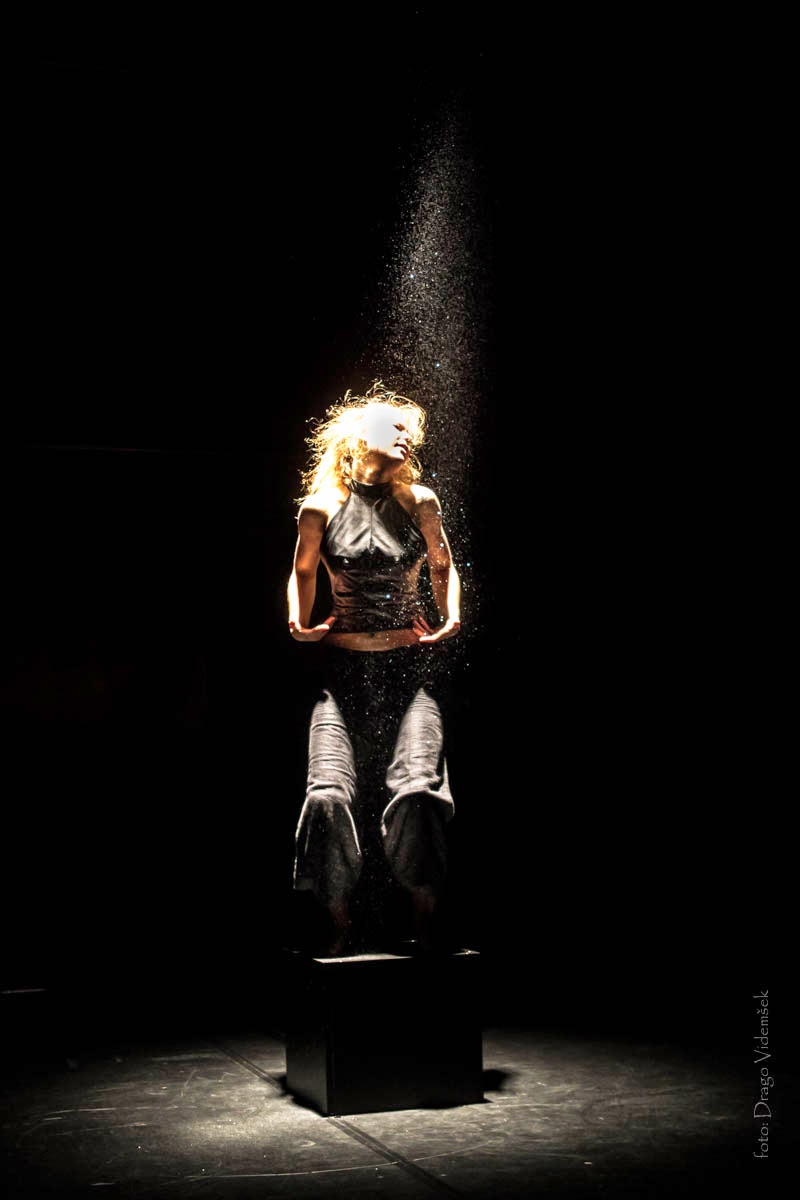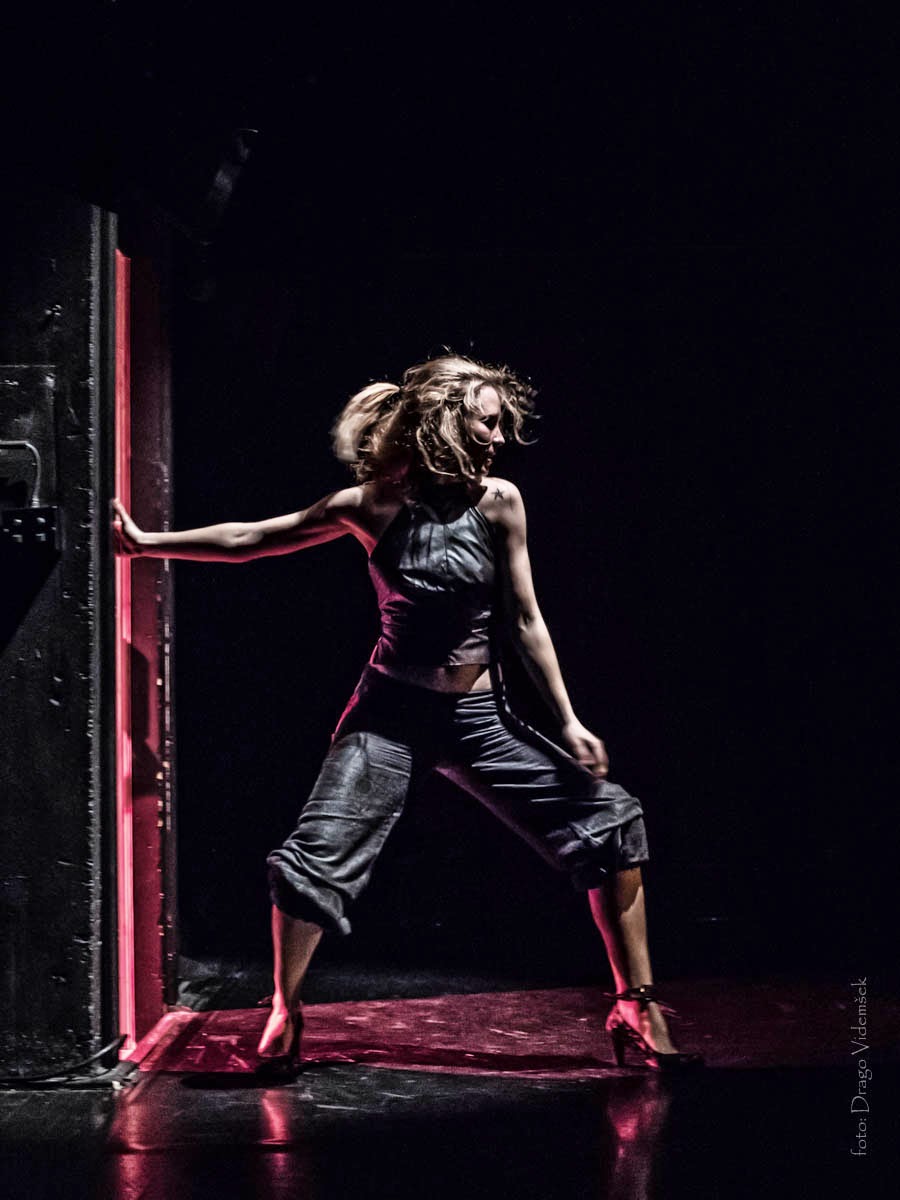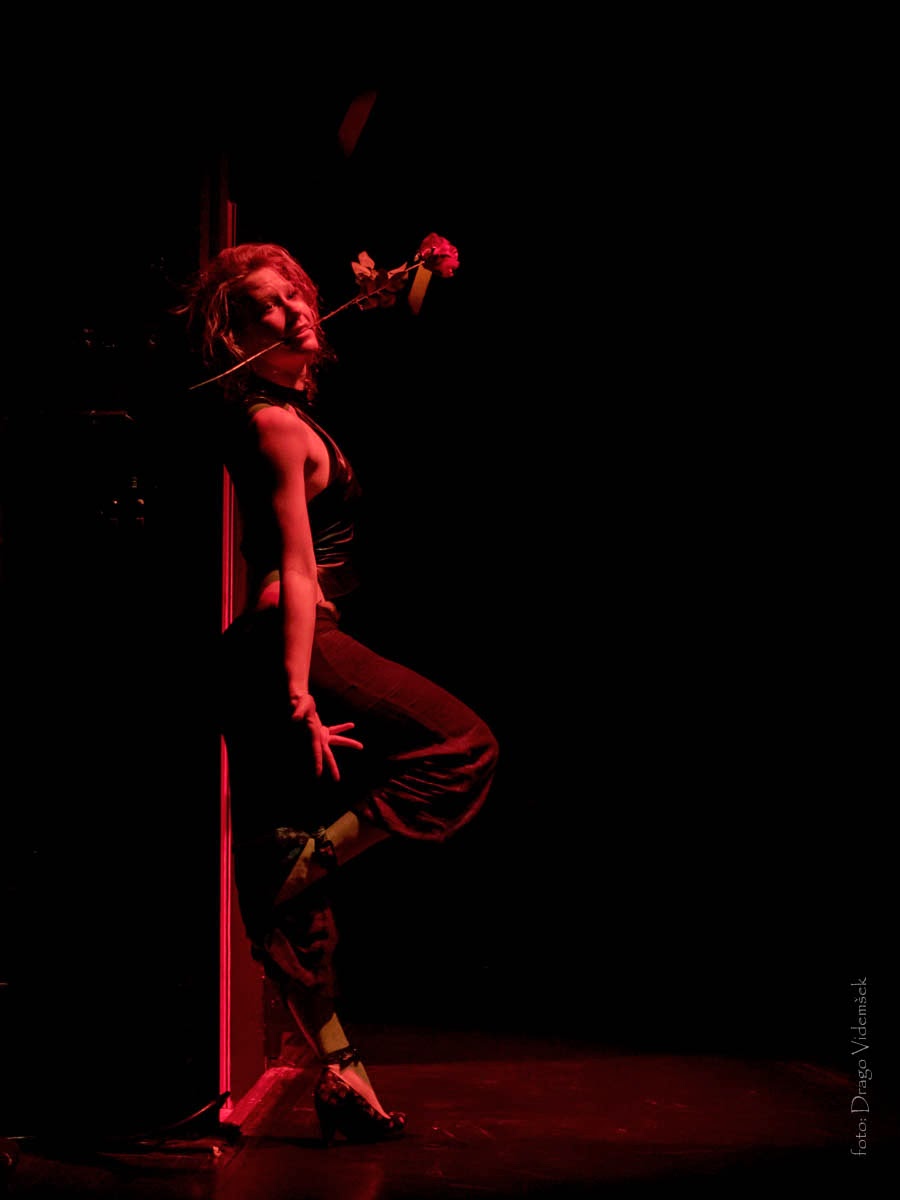Urša Rupnik
IZGUBLJENA / LOST
plesna predstava / a dance performance
Avtorica in plesalka / Author and Dancer: Urša Rupnik
Koreografinje / Choreographers: Daša Lakner (1. del / 1st part), Rosana Hribar (2. del / 2nd part), Maša Kagao Knez (3. del / 3rd part)
Glasba / Music: Jose; Carlos Gardel: A Media Luz
Besedilo / Text: Karen Finley, Glas / Voice: Ula Furlan
Scena / Scene: Aljaž Verdev
Koprodukcija / Co-produced by: Studio za svobodni ples, Cankarjev dom, Studio XXV
Koprodukcija postprodukcije / Co-production of Postproduction: Plesni Teater Ljubljana
INFO / REZ: 041 365 184,ptl@mail.ljudmila.org, info@ptl-lj.si, Facebook
Vstopnice / Tickets: 7/5 (dijaki, študenti, upokojenci / scholars, students, seniors), predhodna rezervacija ali uro pred predstavo v gledališču / prior reservation or an hour before the performance at the theatre
Foto / Photo: Drago Videmšek
O predstavi
Avtorica Urša Rupnik se kot pripadnica tako imenovane slovenske izgubljene generacije v tem projektu ukvarja s problematiko individualne ženske, njene vloge in položaja v družbi, ko v svojih zgodnjih tridesetih še vedno trga popkovino z domačim ognjiščem in udobjem primarne družine ter se hkrati bori za svojo individualnost, poklicni uspeh, partnersko ljubezen ter egoistično oblikovanje lastnega čustvenega in materialnega sveta. Pomnoženo sliko sodobne ženske, ki jo oblikujejo različni družbeni koncepti, vsaka s svojim koreografskim delom in plesno-gledališkim slogom sooblikujejo Daša Lakner, Rosana Hribar in Maša Kagao Knez.
About the performance
A representative of the so-called Slovenian lost generation, Urša Rupnik is examining the issue of a female, her role and position in society. In her early thirties, she is still trying to break loose from the comfort of her nuclear family and striving to assert her individuality, her professional success, romantic relationship and her own egotistical emotional and material worlds. Comprising three choreographic pieces and dance/theatre styles, the multiplied picture of a contemporary woman whose image is adapted in line with various social concepts has been co-created by Daša Lakner, Rosana Hribar and Maša Kagao Knez.
Odlomek iz kritike
“V predstavi se snujejo in izpostavijo stanja, v katerih se znajde tridesetletnica, in se sledi ženski izpovedi, v kateri lahko tudi vsaka ženska najde svojo življenjsko prispodobo; saj se karakterno, čustveno in plesno po odru prepleta čutni ženski duh. Urša Rupnik je plesalka estetskih linij inprefinjenih izraznih rok, je mehka in voljno gibka, ki se jo lahko vedno znova izoblikuje v nekaj novega. Zato ji ni bilo težko slediti trem različnim koreografskim prijemom in posrkati ter vtisniti značilnosti ene, druge alitretje koreografije. Na premieri je Uršin plesni duh razvnel obiskovalce, ki so uprizoritev zelo dobro sprejeli, tudi vstali s sedežev in tako še posebej pozdravili njeno predstavo ter izvedbo, hkrati tudi nagradili avtorice treh koreografij. Izkazano zadovoljstvo gledalcev je možno razumeti tudi kot poklon čisti plesni predstavi, ko se v abstrakciji in liriki plesne forme izpisuje scenski zapis ter izraža aktualni dogodek.” (Daliborka Podboj, Parada plesa)
Excerpt from Press Review / Critic
“The show puts up an intricate exposition of the states a thirty-something finds herself in. It pursues a declaration of femaleness that any woman can recognize as a metaphor of her own life. The sensual female spirit takes over the stage in character, emotion and dance. Urša Rupnik is a dancer of aesthetic curves and subtly expressive hands. She is soft, supple and always readily bent into something new. She follows the three different choreographic approaches with ease, taking in and embodying the characteristics of the first, second and third choreography. At the premiere, the audience were roused and amazed by the exceptional performance, lauding Rupnik’s delivery and the three choreographers with a distinctive standing ovation. The audience’s gratification can be seen as a bow to a pure dance performance, where the screenplay and current events are spelled out in abstraction of the lyrical dance format.” (Daliborka Podboj, Parada plesa)




